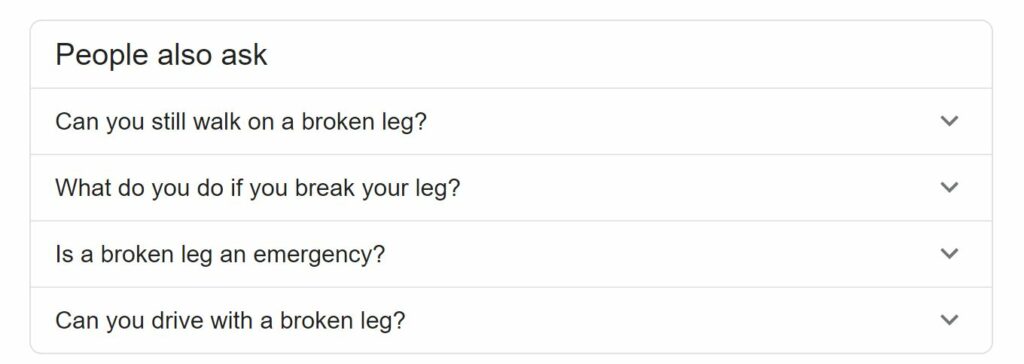An introduction to intent-based search
In our industry, we have always talked about keywords. Specific words that we can optimize towards in order to generate traffic. When Google was born, what we called “keyword stuffing” was literally a thing. Website owners would target a keyword and just copy-paste the word on their website. The site with a keyword repeated the most times won, i.e. ranked number one for that specific keyword. Easy as that!
This was not really “fair game” from the users’ perspective, as they ended up on poor websites consisting of content spammed with keywords. We know that Google aims at providing the best possible piece of content for each query. So they made some changes. More specifically, they released what is called the “Florida” update in 2003, which had a huge negative impact on many websites as they lost rankings. This update mainly targeted websites with very poor content and old school SEO tactics such as keyword stuffing. And the real game took off.
Since then, Google has made thousands of updates over the years and today they make approximately 3500 algorithmic updates every year (moz.com, 2019). For each and every update Google makes, it becomes more intelligent and understands the way the users search and behave online. This further moves us into a new way of thinking when it comes to SEO and working with keywords: intent-based search.
What is intent-based search?
Google continues to make thousands of updates every year in order to improve how they serve content to the users. But, how does it really work?
A couple of years, back discussions emerged about entities. Google found a way to connect the dots between keywords and topics and their relationship, and thus the context of the query. This meant that Google could understand that “bride”, “groom” and “wedding dress” are all keywords that fit into the category “wedding”. Furthermore, it could understand that it was related to “celebrations”, “religion”, “traditions” and so on.
A little after this the expression, “intent” emerged within SEO. A rather odd word in relation to SEO, as the industry primarily had been working with keywords. But what does intent mean in relation to SEO and how does it differ from keywords?
A keyword is a given word that the user enters into the search bar of Google. Based on that keyword they expect some results. With intent, on the other hand, SEO-experts need to understand the context of each query, i.e. does the user want to purchase something or are they looking for information regarding a product or service?
By conducting structured and comprehensive keyword research, it tends to be rather clear what types of keyword variations there are, specifically for B2C content. This is not always the case, as there may be many other alternative topics to cover related to the given query.
Let’s look at two examples of intent-based search
For the keyword “buy iPhone 11 pro 64gb now” the intent is very clear. The user wants to buy this specific phone right away, and should, therefore, be served with a product page where they can purchase the product.
Let’s look at a different industry, e.g. health. This is a very personal topic to many. Within this area, the intent behind the searches might be a little vaguer. Searching for “broken leg” is rather unclear in terms of understanding the context of the query: What type of content does the user expect to be served with? In relation to most of the searches online there are always questions to be answered. This is a very powerful way of understanding intent. Google itself provides a good starting point with “People also ask”-questions in the SERP.

Understanding the questions in relation to a query lets us understand the intent and context surrounding the topic. As Google moves into this sphere themselves with the use of e.g. natural language processing, it is only natural that SEOs must follow – so why not get ahead and start incorporating this strategy already?
Natural language processing and BERT
Every day billions of searches are made on Google and about 15% of these have never been seen on Google before. Search is all about understanding language and this is not always easy. Many users use search engines to learn, and may not have the information or knowledge beforehand, thus making it difficult to enter a “correct” query. It may include misspellings or a combination of words in the wrong order. Google’s goal is to understand these queries and return the best possible content for each query.
In order to do so, Google has developed multiple solutions, but most recently they “… introduced an open-sourced a neural network-based technique for natural language processing (NLP) pre-training called “Bidirectional Encoder Representations from Transformers” – BERT” (Google Blog, 2019). This is a system that allows the admin to train their question and answer system using machine learning.
The technique stems from what is called Transformers, something Google researched quite a lot. Basically, Transformers are models that process words in relation to all other words in a sentence, instead of analyzing word by word. As a result, BERT will, to a greater extent, be able to understand the intent behind the query. This is thanks to BERT being able to connect the words before and after each word in a sentence, rather than stand-alone words or in the classic “left-to-right” manner. Thus, certain words such as “to” and “for” will be given more weight in terms of presenting relevant content, as BERT can understand the context based on how the sentence is constructed. This is the primary reason why intent-based search should be a central part of the SEO strategy and not only traditional keyword research. A combination of the two will allow you to provide good and relevant content for your users.
In part two, we will discuss how BERT will affect the ones working with SEO as well as the users. Moreover, we will put forward a framework for how to work efficiently with intent-based search in a structured manner in order to get relevant and converting traffic to your website.
Perhaps you would also like to read: Intent-based search – cracking the code: Part 2.






